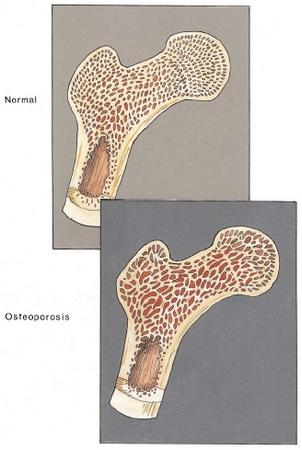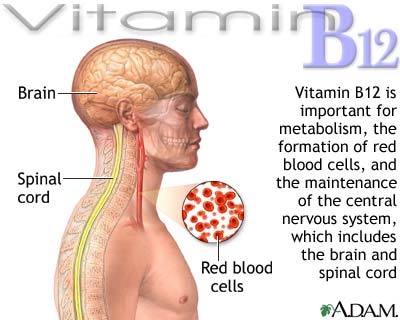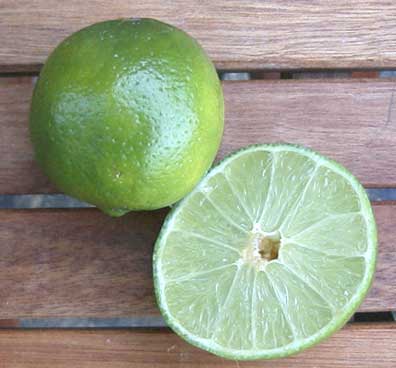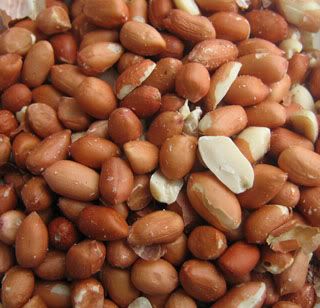
The toe bone’s connected to the foot bone. The foot bone’s connected to the anklebone. The anklebone’s connected to the knee bone. And what holds them together all the way up to the head bone is connected to your diet. Like all body tissues, bones are constantly being replenished. Old bone cells break down, and new ones are born. Specialized cells called osteoclasts start the process by boring tiny holes into solid bone so that other specialized cells, called osteoblasts, can refill the open spaces with fresh bone. At that point, crystals of calcium, the best-known dietary bone builder, glom onto the network of new bone cells to harden and strengthen the bone.
Calcium begins its work on your bones while you’re still in your mother’s womb. But it’s not the only mineral at play. You should also think zinc. Based on a survey of 242 pregnant women in Peru, where zinc deficiency is common, Johns Hopkins researchers found the babies born to women who got prenatal supplements with iron, folic acid, and zinc had longer, stronger legs bones than did babies born to women who got the same supplement minus the zinc. After you’re born, calcium continues to build your bones, but only with the help of vitamin D, which produces a calcium-binding protein that enables you to absorb the calcium in the milk Mummy feeds you. To make sure you get your D, virtually all milk sold in the United States is fortified with the vitamin. And because you may outgrow your taste for milk but never outgrow your need for calcium, calcium supplements for adults frequently include vitamin D. But vitamin D isn’t milk’s only contribution. Remember the iron in the Peruvian (and American) prenatal supplements? It isn’t there by accident. Iron increases the production of collagen, the most important protein in bone. Milk contains lactoferrin (lacto = milk; ferri = iron), an iron-binding compound that stimulates the production of the cells that promote bone growth. When researchers at the University of Auckland in New Zealand added lactoferrin from cow’s milk to a dish of osteoblasts, the bone cells grew more quickly. When they injected lactoferrin into the skulls of five lab mice, the bone at the site of the injection also grew faster, leading the team to suggest in the journal Endocrinology that lactoferrin may play a role in treating osteoporosis. No surprise to the Department of Nutrition Sciences at the University of Arizona, where a study done with scientists from the University of Arkansas and Columbia University shows that women in their 40s, 50s, and 60s who get about 18 milligrams of iron a day have stronger, denser bones than women who get less iron. What makes this intriguing is that 18 milligrams a day is more than double the current RDA (8 milligrams) for older women.
But the iron/calcium dance is a balancing act. In your body, iron and calcium appear to compete to see which one gets absorbed. So the extra iron works only for women who get about 800 to 1,200 milligrams calcium a day — women who get less and women who get more don’t seem to benefit from extra iron.
Finally, please note that the word bones begins with b — as in vitamin B12. The female sex hormone estrogen preserves bone; the male sex hormone testosterone builds new bone. As people age and their supply of sex hormones diminishes, they lose bone faster than they can levels of vitamin B12. A report in the Journal of Clinical Endocrinology and Metabolism says that researchers at the University of California, San Francisco, found that women with lower levels of this vitamin also have less dense hip bones. So to protect your bones, you need calcium, zinc, iron, and vitamins D and B12, all found most abundantly in milk, cheese, eggs, and red meat. Which sounds like a cardiologist’s nutritional high-fat, high-cholesterol nightmare — unless you edit the menu to read: skim milk, low-fat cheese, egg whites, and lean beef. Way to go.






 The toe bone’s connected to the foot bone. The foot bone’s connected to the anklebone. The anklebone’s connected to the knee bone. And what holds them together all the way up to the head bone is connected to your diet. Like all body tissues, bones are constantly being replenished. Old bone cells break down, and new ones are born. Specialized cells called osteoclasts start the process by boring tiny holes into solid bone so that other specialized cells, called osteoblasts, can refill the open spaces with fresh bone. At that point, crystals of calcium, the best-known dietary bone builder, glom onto the network of new bone cells to harden and strengthen the bone.
The toe bone’s connected to the foot bone. The foot bone’s connected to the anklebone. The anklebone’s connected to the knee bone. And what holds them together all the way up to the head bone is connected to your diet. Like all body tissues, bones are constantly being replenished. Old bone cells break down, and new ones are born. Specialized cells called osteoclasts start the process by boring tiny holes into solid bone so that other specialized cells, called osteoblasts, can refill the open spaces with fresh bone. At that point, crystals of calcium, the best-known dietary bone builder, glom onto the network of new bone cells to harden and strengthen the bone.


 Think of your body as a house. Vitamins are like tiny little maids and butlers, scurrying about to turn on the lights and make sure that the windows are closed to keep the heat from escaping. Minerals are more sturdy stuff, the mortar and bricks that strengthen the frame of the house and the current that keeps the lights running. Nutritionists classify the minerals essential for human life as either major minerals (including the principal electrolytes) or trace elements. Major minerals and trace elements are both minerals. The difference between them, nutritionally speaking, is how much you have in your body and how much you need to take in to maintain a steady supply. Your body stores varying amounts of minerals but keeps more than 5 grams (about 1⁄6 of an ounce) of each of the major minerals and principal electrolytes on hand; you need to consume more than 100 milligrams a day of each major mineral to maintain a steady supply and to make up for losses. You store less than 5 grams of each trace element and need to take in less than 100 milligrams a day to stay even.
Think of your body as a house. Vitamins are like tiny little maids and butlers, scurrying about to turn on the lights and make sure that the windows are closed to keep the heat from escaping. Minerals are more sturdy stuff, the mortar and bricks that strengthen the frame of the house and the current that keeps the lights running. Nutritionists classify the minerals essential for human life as either major minerals (including the principal electrolytes) or trace elements. Major minerals and trace elements are both minerals. The difference between them, nutritionally speaking, is how much you have in your body and how much you need to take in to maintain a steady supply. Your body stores varying amounts of minerals but keeps more than 5 grams (about 1⁄6 of an ounce) of each of the major minerals and principal electrolytes on hand; you need to consume more than 100 milligrams a day of each major mineral to maintain a steady supply and to make up for losses. You store less than 5 grams of each trace element and need to take in less than 100 milligrams a day to stay even. Keep in mind that “eating for two” means that you’re the sole source of nutrients for the growing fetus, not that you need to double the amount of food you eat. If you don’t get the vitamins you need, neither will your baby. The RDAs for many nutrients are the same as those for women who aren’t pregnant. But when you’re pregnant, you need extra
Keep in mind that “eating for two” means that you’re the sole source of nutrients for the growing fetus, not that you need to double the amount of food you eat. If you don’t get the vitamins you need, neither will your baby. The RDAs for many nutrients are the same as those for women who aren’t pregnant. But when you’re pregnant, you need extra



 The good news is that vitamin deficiencies are rare among people who have access to a wide variety of foods and know how to put together a balanced diet. For example, the only people likely to experience a vitamin E deficiency are premature and/or low–birth weight infants and people with a metabolic disorder that keeps them from absorbing fat. A healthy adult may go as long as 10 years on a vitamin E–deficient diet without developing any signs of a problem. Aha, you say, but what’s this subclinical deficiency I hear so much about? Nutritionists use the term subclinical deficiency to describe a nutritional deficit not yet far enough advanced to produce obvious symptoms. In lay terms, however, the phrase has become a handy explanation for common but hard-to-pin-down symptoms such as fatigue, irritability, nervousness, emotional depression, allergies, and insomnia. And it’s a dandy way to increase the sale of nutritional supplements.
The good news is that vitamin deficiencies are rare among people who have access to a wide variety of foods and know how to put together a balanced diet. For example, the only people likely to experience a vitamin E deficiency are premature and/or low–birth weight infants and people with a metabolic disorder that keeps them from absorbing fat. A healthy adult may go as long as 10 years on a vitamin E–deficient diet without developing any signs of a problem. Aha, you say, but what’s this subclinical deficiency I hear so much about? Nutritionists use the term subclinical deficiency to describe a nutritional deficit not yet far enough advanced to produce obvious symptoms. In lay terms, however, the phrase has become a handy explanation for common but hard-to-pin-down symptoms such as fatigue, irritability, nervousness, emotional depression, allergies, and insomnia. And it’s a dandy way to increase the sale of nutritional supplements.
 Pantothenic acid, another B-vitamin, is vital to enzyme reactions that enable you to use carbohydrates and create steroid biochemicals such as hormones. Pantothenic acid also helps stabilize blood sugar levels, defends against infection, and protects hemoglobin (the protein in red blood cells that carries oxygen through the body), as well as nerve, brain, and muscle tissue. You get pantothenic acid from meat, fish and poultry, beans, whole grain cereals, and fortified grain products. As with biotin, the Food and Nutrition Board has established an Adequate Intake (AI) for pantothenic acid.
Pantothenic acid, another B-vitamin, is vital to enzyme reactions that enable you to use carbohydrates and create steroid biochemicals such as hormones. Pantothenic acid also helps stabilize blood sugar levels, defends against infection, and protects hemoglobin (the protein in red blood cells that carries oxygen through the body), as well as nerve, brain, and muscle tissue. You get pantothenic acid from meat, fish and poultry, beans, whole grain cereals, and fortified grain products. As with biotin, the Food and Nutrition Board has established an Adequate Intake (AI) for pantothenic acid.














 Your body needs at least 11 specific vitamins: vitamin A, vitamin D, vitamin E, vitamin K, vitamin C, and the members of the B vitamin family: thiamin (vitamin B1), riboflavin (B2), niacin, vitamin B6, folate, and vitamin B12. Two more B vitamins — biotin and pantothenic acid — are now believed valuable to your well-being as well. And one unusual compound called choline has recently received some favorable mention. You need only miniscule quantities of vitamins for good health.
Your body needs at least 11 specific vitamins: vitamin A, vitamin D, vitamin E, vitamin K, vitamin C, and the members of the B vitamin family: thiamin (vitamin B1), riboflavin (B2), niacin, vitamin B6, folate, and vitamin B12. Two more B vitamins — biotin and pantothenic acid — are now believed valuable to your well-being as well. And one unusual compound called choline has recently received some favorable mention. You need only miniscule quantities of vitamins for good health.














